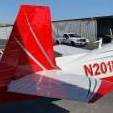Stock engine gauge freak out?
-
Members Online
- exM20K
- Florian Guthardt
- jcovington
- Littleman749667
- Fly Boomer
- hazek
- LANCECASPER
- Skyhighguy
- McMooney
- 1st mooney
- Bike_rider
- Boboli
- bcg
- Schllc
- CChris
- Mac80
- Adam_StPete
- Red Leader
- Ragsf15e
- Paul Thomas
- MikeOH
- M20S Driver
- ta2too
- jamesm
- ResumeNormalSpeed83
- Schinderhannes
- Bonanza flyer
- colinzp
- phrogpilot73
- Utah20Gflyer
- MarkD34M
- PeteMc
- FlyingDude
- DonMuncy
- Deb
- ed
- AndreiC
- TheAv8r
- TGreen
- Ethan
- wombat


Recommended Posts
Join the conversation
You can post now and register later. If you have an account, sign in now to post with your account.